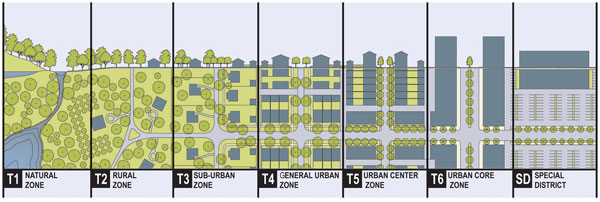Zoning

Sustainable zoning practices address environmental, economic, and social equity factors by incorporating both performance and form-based zoning tools to respond to regional climate, ecological, and cultural challenges.
Traditional or Euclidean zoning, still predominantly used by municipalities nationwide, provides a high emphasis on separation of uses and is typically not flexible enough to accommodate innovative development practices. This has been standard practice to prohibit proximity of incompatible uses and to guide development patterns. Planned Unit Development (PUD) zoning is prevalent in various fast-growing communities to allow grouping of compatible land uses with various public amenities.
Sustainable zoning codes and regulations are intended to incorporate land use, building form, open space, energy, health, water quality, food production, climate change, recycling and the relationships among those. Sustainable zoning codes can remove barriers, create incentives, and provide mechanisms for sustainable development and smart growth.
Form-Based Codes focus on an integrated built form addressing a relationship between building facades and the public realm.
NCTCOG has compiled a guidebook for sustainable zoning practices. This guidebook is a resource for North Texas with information on locally adopted zoning approaches supporting walkable, mixed-use, and transit-oriented developments. This includes where, how, and what various zoning strategies have been locally implemented. Using a review of codes from 36 North Texas cities, the intent is to provide a picture of sustainable zoning trends in the region and provide an array of zoning options cities can easily review and possibly adopt in support of sustainable land use and transportation coordination. Download a PDF copy of the Sustainable Zoning Guidebook.
Learn more about Complete Streets and Context Sensitive Design here.